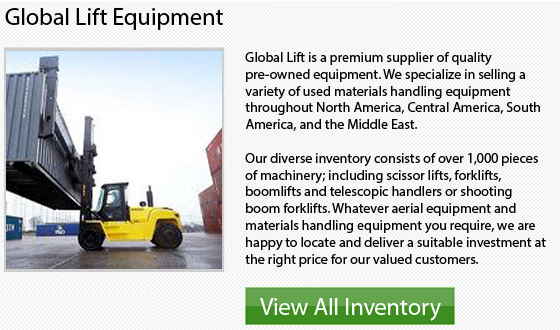
The following add-ons are helpful for narrow aisle lift trucks:
Side shift: Side shift is an option which allows the lateral movement of the load without having to move the unit. This allows loads to be precisely placed.
Tilt mast: The tilt mast option allows the forks to shift forwards and backwards. This is perfect in cases where loads aren't entirely level. To gain more stability while transporting a truck that is loaded, the mast could be tilted back.
Extendable forks: The option of extendable forks helps the "reach" of the forklift to extend for stacking pallets one in front of the other, referred to as "double-deep" loading.
Operator platforms: Operator platforms enable some NA forklifts to lower and raise the operator while the forks are being lowered or raised. This provides utmost control and visibility when handling loads at heights of 6 to 9 meters.
Lift Truck on a Ramp
Drivers have to be correctly taught and are required to be tested and licensed. It is important for anyone operating a forklift to be educated regarding safety rules and concerns. Drivers should know how to make adjustments in situations where the weight of the load changes the center of gravity or on uneven surfaces. Safety measures cover the safe operation of a forklift on a ramp, that is a frequent happening as the operator would typically need to drive up and down ramps to load and unload containers.
Suggestions for Operating a Lift Truck on a Ramp
1 Drive slowly when approaching a ramp and when driving up and down the ramp. The risk of accidents is increased when driving at high speeds because this could upset the equipment's center of gravity.
2 When not carrying a load, drive the forklift in reverse while moving up an incline on a ramp.
3 When moving down an incline on a ramp with no load, drive forward.
4 Tilt the forks a little back to shift the center of the load to the machine's front, while moving up or down a ramp when carrying a load.
5 In order to make the load more steady, drive forward up a ramp when carrying a load.